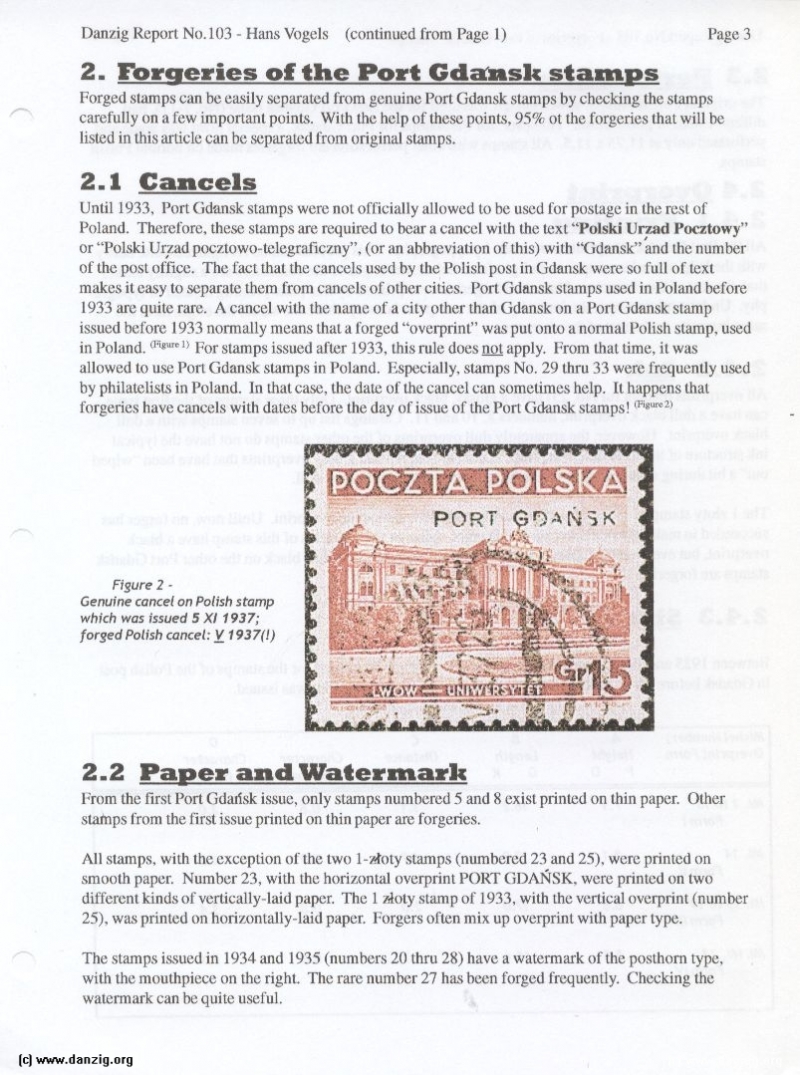
2. Forgeries of the Port Gdansk stamps
Forged stamps can be easily separated from genuine Port Gdansk stamps by checking the stamps carefully on a few important points. With the help of these points. 95’i1 ot the forgeries that will be listed in this article can be separated from original stamps.
2.1 Cancels
Until 1933. Port Gdnask stamps were not officially allowed to be used for postage in the rest of Poland. Therefore, these stamps are required to hear a cancel with the text “PoiskI Llrzad Pocztowy” or “PoLsk Uriad pocztowo-telcgralici.ny”. (or an abbreviation of this) with “(idansk” and the number of the post otlice. The fact that the cancels used by the Polish post in (Jdansk were so full of text makes it easy to separate them from cancels of other cities. Port Gdansk stamps used in Poland before 1933 are quite rare. A cancel with the name of a city other than Gdansk on a Port Gdansk stamp issued before 1933 normally means that a forged “overprint” was put onto a normal Polish stamp. used in Poland. “i” ‘ l’or stamps issued after 1933. this rule does jjj apply. From that time, it was allowed to use Port Gdansk stamps in Poland. Especially. stamps No. 29 thru 33 were frequently used by philatelists in Poland. In that ease, the date of the cancel can sometimes help. It happens that forgeries have cancels with dates before the day of issue of the Port Gdansk stamps! Ow.2)
Figure 2 - Genuine cancel on Polish stamp which was Issued 5 XI 1937; forged Polish cancel: 1937(1)
2.2 Paper and Watermark
From the first Port (idailsk is.suc, only stamps numbered 5 and 8 exist printed on thin paper. Other stamps from the first issue printed on thin paper are forgeries.
All stamps. with the exception of the two l-Aoty stamps (numbered 23 and 25). were printed on smooth paper. Number 23. with thc horizontal ovcrpnnt PoRT (1DA1ISK. were printed on two different kinds of vcrtically.laid paper. The 1 1oty stamp of 1933. with the vertical overprint (number 25). was printed on horiiontally-laid paper. Forgers often mix up overprint with paper type.
The stamps issued in 1934 and 1935 (numbers 20 thru 28) have a watermark of the posthom type, with the mouthpiece on the right. The rare number 27 has been forged frequently. Checking the watermark can be quite useful.
Danzig Report Vol. 1 - Nr. 103 - April - May - June - 1999, Page 3.
Hits: 13160
Added: 24/07/2015
Copyright: 2024 Danzig.org

